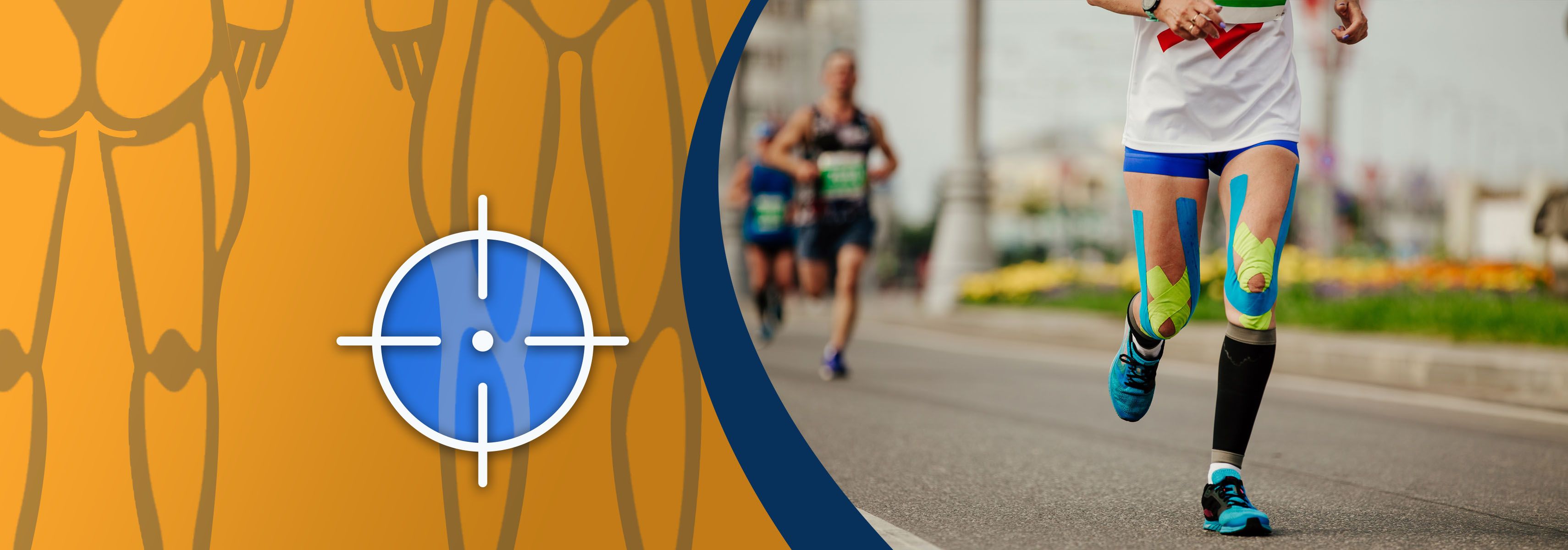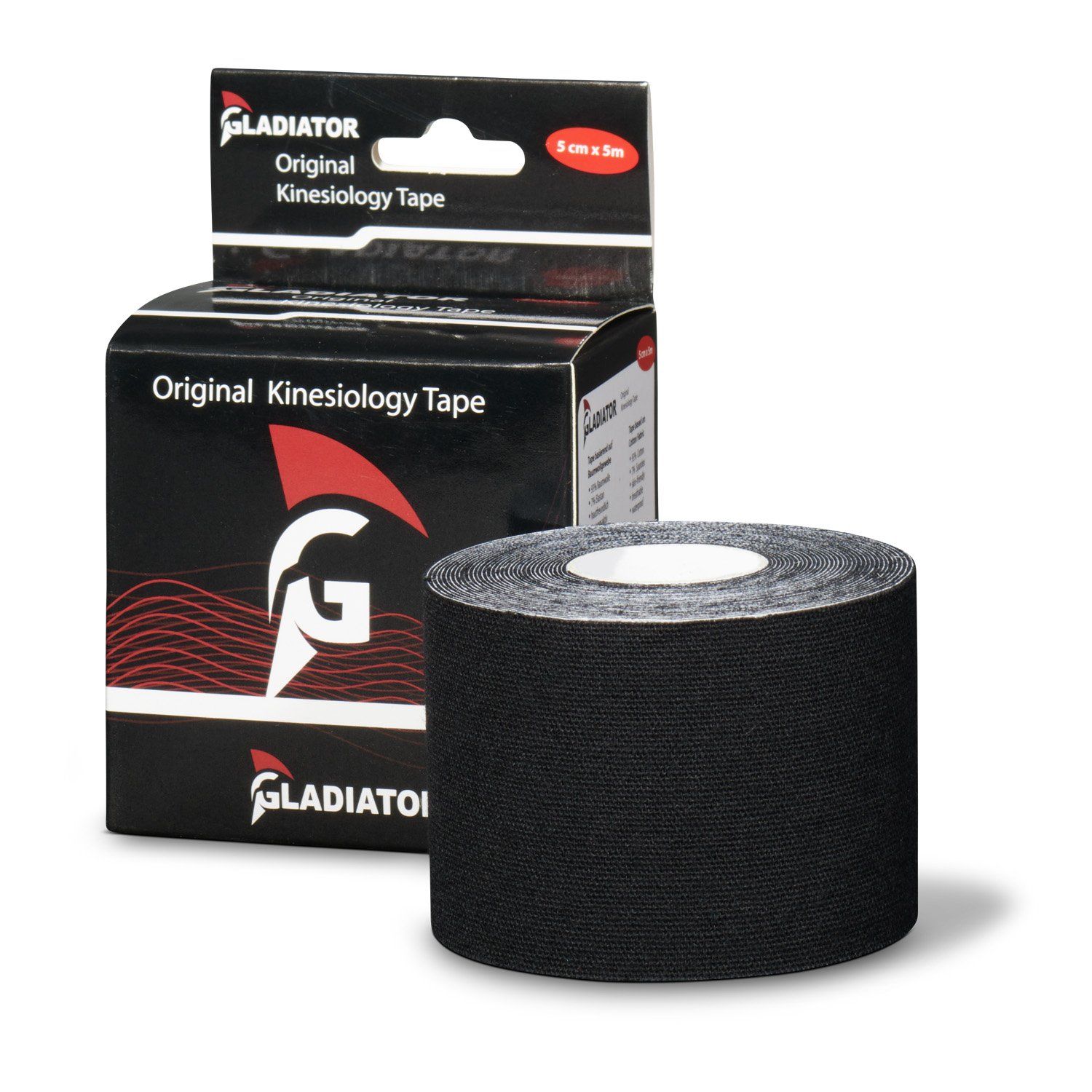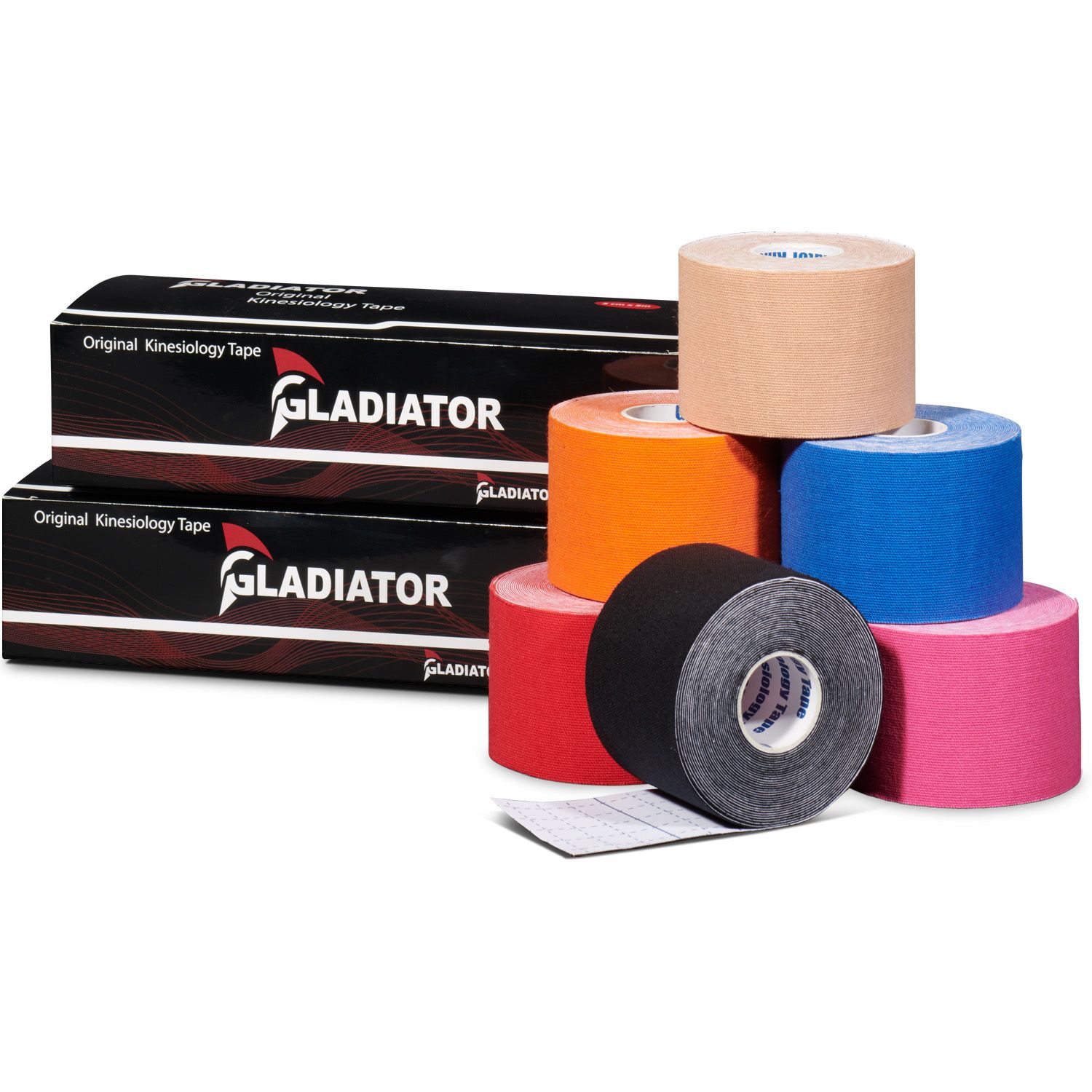Do you tape your knee if you experience discomfort during sports, walking or climbing stairs? Then you may be wondering: what is the best way to tape a knee for support and relief? In this blog, we explain step by step how to tape your knee. Whether you are an athlete, therapist or over 60, with the right taping technique you can get more out of your recovery or prevention. If you would like more information about taping your knee, read on and discover some practical tips.
The blog in brief
- Learn how to tape your knee in case of injury or instability
- Discover when tape is more effective than a brace
- Get explanations about applying tape for different complaints
What is the purpose of taping your knee?
If you suffer from knee pain, it makes sense to look for support that works. Knee taping can help reduce pressure, activate muscles and guide movements. Tape is particularly popular for overload, instability or recovery after an injury. Many athletes, physiotherapists and older people use kinesio tape to reduce complaints without losing freedom of movement.
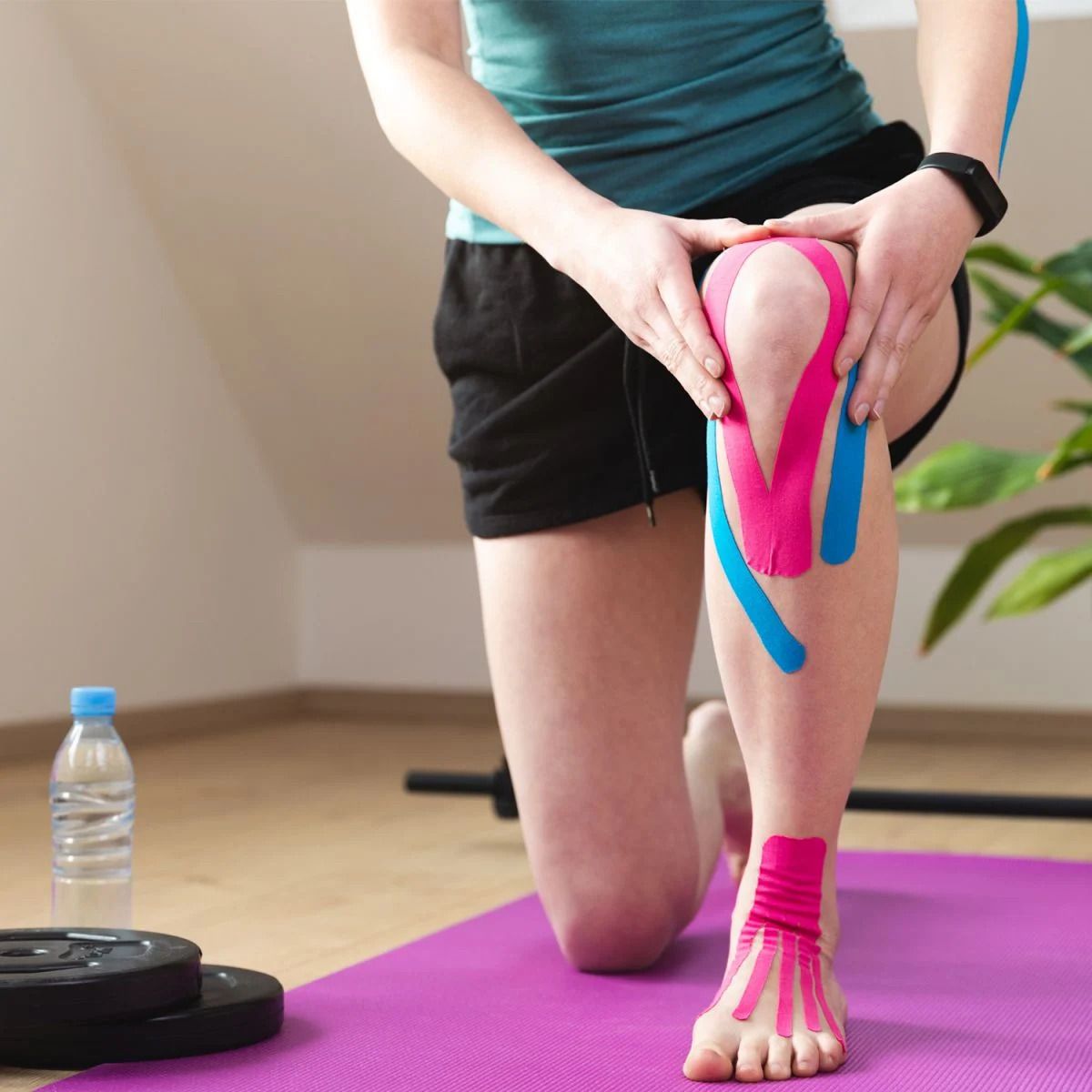
What complaints can you treat with knee tape?
Not every knee complaint requires tape, but in many cases it offers a solution. Tape is mainly used for mild to moderate knee complaints. Think of overexertion, a feeling of instability or kneecap problems. The right technique makes all the difference, because incorrect taping can actually aggravate the complaint. If you are unsure, always consult a physiotherapist.
What are the advantages of taping your knee?
Many people choose taping instead of a brace because it is lighter and more flexible. The tape moves with your skin and muscles, giving you more freedom of movement. This is particularly beneficial during sports or daily activities. In addition, with a little practice, you can easily apply the tape yourself.
- The tape provides support without restricting the knee
- You can apply it to specific muscle groups or structures
- Tape can contribute to a better sense of stability and control
- You maintain your normal movement pattern
How do you tape a knee correctly?
Are you wondering how to tape your knee so that it stays in place? It is important to proceed step by step. Always start by cleaning and drying the skin. Use good quality tape, such as kinesio tape, which is elastic and suitable for sports or long-term wear. Then apply the tape as follows:
- Make sure the skin is clean and dry.
- Cut two strips of tape measuring approximately 20 cm and one strip measuring 15 cm.
- Round the ends of the tape to prevent it from coming loose.
- Sit down with your leg bent at a 90-degree angle.
- Place the base of the first strip of tape without stretching it on the outside under the kneecap.
- Apply the tape with a slight stretch towards the outside of the thigh.
- Repeat this with the second piece of tape, starting at the inside of the kneecap and moving towards the inside of the thigh.
- Use the third piece of tape (15 cm) for extra stability.
- Tear the protective paper in the middle and apply the middle part with maximum stretch directly under the kneecap.
- Let the ends run out without stretch, but not into the hollow of the knee.
What can you do if you are unsure about the technique?
Sometimes it can be difficult to tape yourself, especially if your knee is hard to reach. Or you may not be sure if you are doing it correctly. In that case, you can ask a physiotherapist for advice. Instructional videos specifically aimed at runners, athletes or older people are also valuable. Always make sure that you do not irritate your skin or tape your knee too tightly.
When should you tape your knee?
You do not always need to tape your knee. It is particularly useful if you experience discomfort when moving or need extra support. Taping can also provide relief during recovery from an injury or in cases of repeated strain. Use tape primarily as a temporary aid and combine it with exercises.
How do you choose the right tape for your knee complaint?
There are many types of tape available, from standard kinesiology tape to specially developed sports tape. Choose a tape that suits your skin, activity level and complaint. Not every tape is suitable for long-term use or sweaty conditions. Read reviews, ask for advice or test a few varieties yourself.
What about tape for osteoarthritis or older users?
Older people can also benefit from knee taping, provided it is applied correctly. Tape can help with osteoarthritis, mild instability and support when walking. However, it is important to choose a soft and skin-friendly tape. And if it is difficult to apply yourself, ask for help.
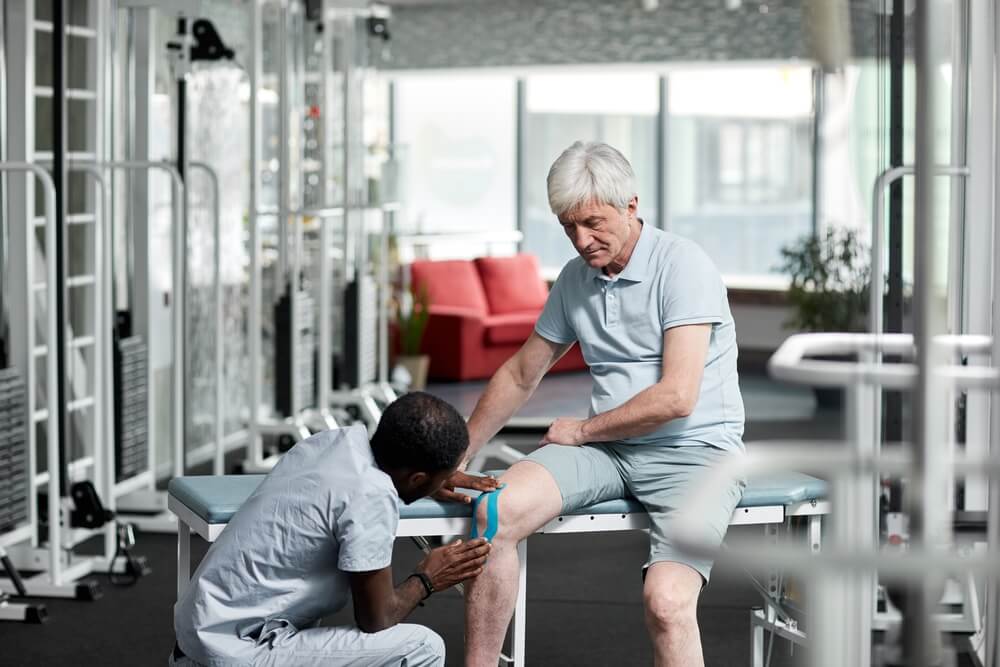
How long should you leave tape on your knee?
A frequently asked question is: how long does tape stay on and when should you replace it? Kinesiotape usually stays on for 3 to 5 days. Make sure your skin does not become irritated and always remove the tape carefully. During intensive exercise, the tape may come off sooner. Check regularly to see if it is still in place.
Tape your knee correctly and relieve symptoms
Knee taping is a practical way to provide support for pain, instability or recovery. Whether you are an athlete, therapist or an elderly person with osteoarthritis, the right taping technique makes a big difference. Start with good preparation, choose the right tape and follow reliable instructions.
At Podobrace, we have several types of kinesio tape that can help you remedy your knee complaints. Would you like personal advice? Feel free to contact our team of medical specialists. They will be happy to help you choose the right support.




